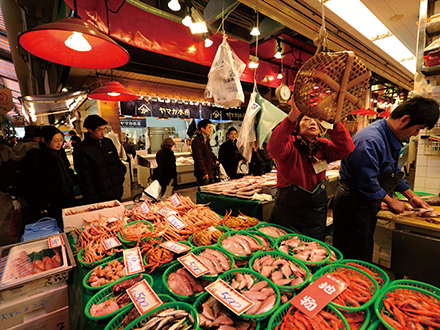Kanazawa
The samurai culture from the feudal era remains in Kanazawa even today through traditional performing arts like the elegant and refined Noh music and dancing and also through high-quality and stylish traditional arts and crafts. With so much to see and do, you can walk, catch a bus or taxi between the attractions.
Kenrokuen Garden

One of the three most beautiful gardens in Japan, where the characteristics of the "Kaiyurinsen" Style from the Edo Period still remains inside the garden today. Kenrokuen was built by the 5th lord of the Kaga Clan Tsunanori in 1676 (Enbo 3), and it took about 170 years to finish. Kenrokuen offers spacious, tranquility, artificial, antiquity, water fountains and magnificent view from the mountain. It has many attractions such as the lanterns, Gankobashi Bridge and the Kasumigaike Pond. Open year round.
Nagamachi Samurai Houses

Distinct characteristics of the feudal town with mud doors, walls and gates, samurai windows of the houses remains the same as they were 400 years ago. Inside the Nagamachi area, one can also visit the Ashigaru Shiryokan, which was a house that belonged to a soldier in the Kaga Clan. The Nomura Samurai Family Residence is also open to the public so visitors can get a feel of what a Samurai's daily lives were like during the feudal times.
Higashi Chaya Teahouse District

Near the Asanogawa Ohashi Bridge, this area shows the picturesque atmosphere of the wooden lattice fronts of old geisha houses and restaurants, and was designated as an Important Preservation Districts for Groups of Historic Buildings. You can still hear the sounds (music) of Shamisen and Taiko from teahouses echoing through the streets in the evenings. Inside the Higashi Chaya Teahouse District, there are buildings such as the Shima and the Kaikaro teahouses that were constructed 200 years ago. Visitors can enjoy a cup of green tea and Japanese sweets while enjoying the unique atmosphere inside one of these old geisha houses.
Ishikawa-mon Gate, Kanazawa Castle

Symbolizing the castle town of Kanazawa, this impressive structure stands to the east of the remnants of Kanazawa Castle facing Kenrokuen Garden. The Gate has the stonewall amidst the rich natural greenery evokes the grandeur of the region's ancient prosperous days, and the night time illumination lends a sense of fantasy to the area. The Gate was built as a "Masugata-mon", where the entrance is an iron gate and the inner walls were built with stones, along with constructions such as the 2-story Hishi Yagura and Tamon for weapon storage. During the early stage of Meiji Period, most constructions inside the castle were destroyed by fire and only the Ishikawa-mon Gate was left. In September 2001 (Heisei 13), historical wooden structures such as the Hishi Yagura and the Hashizumemon Tsuzuki Yagura were restored and the area was renovated to become a castle park.
Sakuda Gold & Silver Leaf Shop
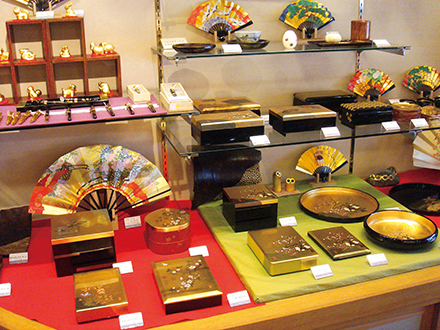
For 80 years, Sakuda has continued to spread the Gold and Silver Leaf art of Kinpaku*, which has been cultivated through a long history of 400 years. Sakuda produces and sells golden 'byobu' (folding screen) and various gold leaf art and craft as well as "Aburatori-gami" (face oil blotting paper) which are very popular. You can also have a hands-on experience of Kinpaku. You can make your original works by applying kinpaku on chopsticks or small boxes in a design that you like.* Kinpaku (Gold Leaf) is gold which is beaten into an extremely thin paper-like sheet and applied decoratively.
Onsens

Hot springs (onsen) can be found all throughout Ishikawa Prefecture and have been loved by people for hundreds of years. Kanazawa features Yuwaku Onsen and Fukatani Onsen, known for generations as the “inner room” of Kanazawa. Head out a little farther and you will find Tatsunokuchi Onsen.
Restaurants

Kanazawa is famous for food. Enjoy seasonal Japanese food, sweets, seafood, local sake etc. Teppanyaki, sushi, oden, seafood caught fresh from the Sea of Japan, Ishiru hot pot, and hand-made soba (buckwheat) noodles are favorites among visitors. Kanazawa also does western style food very well with plenty of French and Italian fine dining restaurants available. Most restaurants have menus in English.
A lot of good restaurants are hidden in old buildings. Look for a red curtain hanging out the front, indicating they are open. Pick one that has a lot of locals dining in. Some tables are set on Tatami mats, if so, you will need to remove your shoes before walking on the mats and sit on the floor to dine. Some restaurants offer tables with sunken floors for your legs.
Shopping
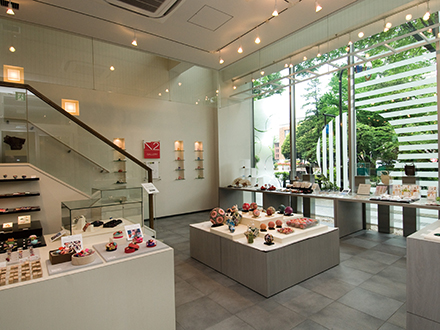
The most popular souvenirs from Kanazawa are gold leaf products, lacquerware, ceramics and Kaga Yuzen fabrics. Recently, there has also been a boom in cosmetic products containing gold leaf. Visitors looking for general souvenirs from Ishikawa can go to the Kanazawa Hyakubangai Shopping Center (located in JR Kanazawa Station) or to the Ishikawa Products and Tourist Center. The Higashi Chaya Teahouse District also has many shops selling gold leaf products.
Ishikawa Prefectural Museum of Art
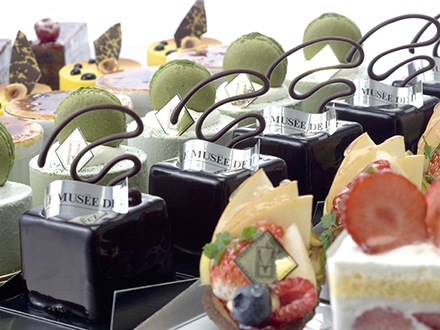
This Art Museum, although located in Kanazawa's busy urban area, is surrounded by the greenery of Honda no Mori. Inside a simple looking white-brick building, there are several large exhibition halls. Various famous old art works, including a fine collection of some excellent deep-colored old Kutani porcelain, are on display in the permanent exhibition halls. The cultural heritage of 'pheasant shaped incense burners' handed down through the generations of Maeda Family (the rulers of old Kaga Province) is also quite famous. Especially, "Iroe-kiji-kouro*"by Nonomura Ninsei, who is famous for beautiful coloring, is a must see. Iroe-kiji-kouro is also a designated National Treasure. This facility also has a Museum Shop which sells reproductions or miniature replicas of original goods displayed at the museum. Plus enjoy artisan desserts produced by patisserie TSUJIGUCHI Hironobu (born in Ishikawa prefecture) at Le Musee de H Kanazawa cafe.* Iroe-kiji-kouro is an 'incense burner in the shape of a pheasant decorated with enamels'.
21st Century Museum of Contemporary Art
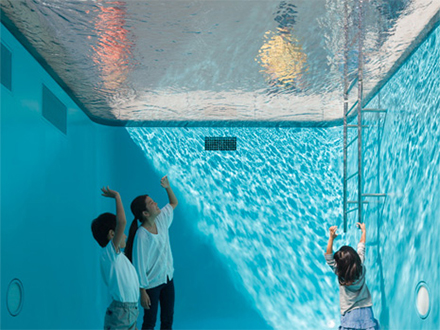
This art museum in Kanazawa focuses on the Contemporary Art. It's located in the center of the City and thus can be easily reached. It's a museum resembling a park where one comes across all kinds of people and can have a variety of experiences. Circular in form, the Museum has a diameter of 113m with the glass peripherals. The Museum has 4 points of entry and exit. Inside the Museum, there's a special "pay and watch" museum zone apart from places to interact and exchange such as Cafes, Restaurants and Art Library. People can walk through freely through any or all sections of their choice.
Omi-cho Market
The Omi-cho Market was established about the middle of the 18th century. Since then, it has been supporting the gastronomic culture of Kanazawa for more than 280 years. There are as many as 170 stores including a large number of fish stores that sell fresh fish and seafood caught in the Sea of Japan, vegetable stores that sell unique Kaga vegetables, fruit stores, dried food and marine product stores, grocery stores, and clothing stores besides restaurants.
Crabs, yellowtail, and small shrimp from the Sea of Japan that are sold around November, in particular, are highly evaluated in Japan. The market is crowded with residents and tourists during the season.

